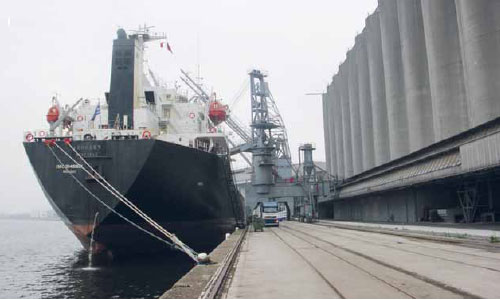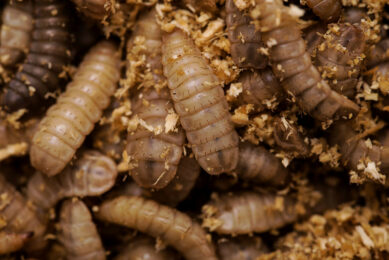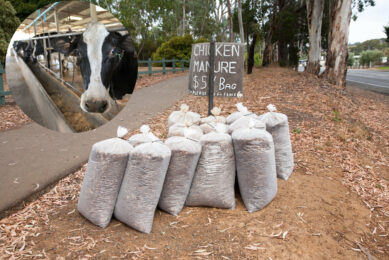Good practices in feed transport need unification

Making a product is one thing, but getting the product to the end user is something else. Today there is very little legislation on feed transport as such and this activity is therefore primarily governed by law from its driving activities, production and trading.
Traffic of goods, with logistic service providers as a driving force, are essential factors for the economic opening of regions, determining the beginning and growth of trading zones and markets. Existing trading routes are essentially based on naturally present passages such as rivers, sea straits and mountain passages, further developed by man with the building of roads and railroads, the digging of channels, the building of loading docks, harbours and airports. All these types of routes, in combination with the product to be transported, are guides for the operator in making a choice in the type of transport he will use.
The animal feed sector is very strongly regulated on a European as well as on an international level. Making exception for labour, sustainability and environment, feed safety is a key element to work with. The terms ‘from farm to fork’ and ‘from fish to dish’ fit into this. A growing public awareness on quality and safety of the food ending up on their plates and the influence of the whole series of activities behind it, has urged lawmakers to provide the feed industry with a regulation that is highly orientated towards feed safety.
Besides the available infrastructure for transport, the choice of the correct type of transport is also based on the idea of feed quality and safety.
From international to local
The feed sector is a very diverse and internationally oriented sector and the variety of existing types of transport is an excellent tool for the distribution of feed products. On the other hand, the delivery of the final product to the end user, usually the animal breeder, is a strictly local business. This contradiction sprouts from the diversity of products coming from this industry. Animal feed stands for a very wide concept. All the products that are meant to be used for feeding animals, in its natural form or after a processing step are part of this. Stable raw materials as well as products that quickly degrade or decompose are comprehended. The speed of transport and the region in which the animal feed company operates, determine the choice of the transport type. While additives go around the world and speed in this context is more of economic importance, compound feed operators act within a limited radius around their company, with a speedy service and feed safety intertwined.
Lack of uniformity
Despite free traffic of goods within the EU and the high degree of cooperation between the member states, several aspects are taken care of on a national level and through bilateral agreements, and European guidelines are not always implemented in the same way by the member states. The lack of uniformity and clear rules, especially in the EU, has moved the industry towards commercial initiatives focusing onacross the border feed safety by developing quality standards and systems to be operated by individual sectors or throughout the whole food chain.
Knowledge of Good Practices and especially working according HACCP principles are an absolute requirement and this line of working is extended to transport as well.
The Belgian discussion platform of the feed industry, OVOCOM, developed a quality system in the 90s, called GMP Animal Feed, based on HACCP principles and elaborated on Good Manufacturing/Management Practices. This system contains all possible activities in relation to animal feed, and transport is a red line throughout the whole chain. Because all players in the feed chain are involved, it is almost evident that the GMP requirements are passed on from buyer to supplier.
Traceability as foundation
With traceability as a fundamental item within GMP, the different types of transport, namely road haulage and rail transport, inland water traffic and coastal and ocean shipping, have become an indispensable part of a closed GMP chain. The product needs to be tracked down from its source to its final destination. In this whole story the transporter has a duty of registration.
Regardless of the transport type, the delivery of a quality service fulfilling the demands of the customer is another basic item the GMP transporter has to work with. A feed safe way of transporting must be maintained at all times. On the one hand products during transport need to be protected against contamination or deterioration. On the other hand transported products must not be the cause of cross contamination in following transports. There are certain cleaning prescriptions of the cargo spaces to be followed. Moreover, it is not allowed to just transport anything. A GMP transporter needs to follow the guidelines and the list of products.
Controlling the correct execution of the GMP prescriptions is a task for the independent third party, the certification – and inspection organisation, issuing a certificate or attestation as proof of good conduct. The independent third party, on their turn, in the context of their accreditation certification are controlled by often governmental organisms that operate according to European or international accreditation rules. Controlling the controller closes the circle.
Forest of quality standards
At first, GMP Animal Feed was solely directed towards the Belgian feed operator, but today the system is more and more internationally accepted. To give the certified feed operator sufficient economic space, it was and still is important to work towards mutual acceptance with other quality standards that also have a certain degree of equivalence. In Europe there are several standards which have a similar food and feed chain approach as GMP Animal Feed (e.g. GMP+ FSA in the Netherlands and QS in Germany) or have partly parallel arrangements. Examples of the latter are the French Qualimat Transport and the British road transport standards TASCC and GTAS.
But there are many more and diverse commercial quality standards for all possible kinds of activities within the feed industry, making it almost impossible for the feed operator to make a choice for their own activities and at the same time to keep up with the equivalent systems and the conditions of acceptance.
When, next to feed safety other aspects are targeted in a company’s mission, e.g. sustainability, the whole scenery of available standards expands almost exponentially which makes it virtually impossible for the feed operator to make a decent and affordable choice.
Creating communal level
An initiative to work towards a higher level of cooperation and mutual acceptance was taken in 2007 by four European scheme holders; OVOCOM (GMP Animal Feed), GMP+ International (GMP+FSA), QS and Qualimat transport. The team efforts resulted in the International Committee for Road Transport, the ICRT.
In the framework of a profound cooperation, a common database with products and cleaning regimes was made and clear commitments on its use were made by the participating members. This database is now even used by other scheme owners as a reference for their own transport. The intention of the ICRT to strive towards unification and simplification has hereby proved to be a success.Next to road haulage the ICRT is now working on a second part, namely inland water traffic. This type of transport is already operating in a similar way as road transport in terms of product lists, cleaning regimes and control of cargo spaces and because of the many parallels between the two activities it is relatively easy to work towards harmonisation.Transport via railroads, coastal and ocean shipping are less diversified when it comes to transporting feed in comparison with road and inland water traffic. The two main categories here are container shipment and large bulk shipment. They are large-scale operations in comparison to the other types of transport previously mentioned and they are also very strictly regulated by international agreements and standard trading contracts. There are not as many quality standards that contain these activities and if they are, they are not elaborated as extensively as is the case for other types of transport.
Because of the limited possibilities of airways for transporting feed – it is mainly only suitable for packaged goods – and the fact that there are cheaper alternatives in shipping, there are no European quality standards containing this type of transport.
Cooperation required
To avoid any confusion with the feed operator, and to make sure that working in a feed safe way becomes a natural practice and without any economic constraints, it is necessary to stop the proliferation of quality standards and to work towards thorough cooperation and mutual acceptance between the standards that exist. Initiatives taken by the ICRT, where the harmonisation is a common goal, should be followed by other scheme owners and this across the borders of activities and targets or missions. A 100% full proof feed safe network can never be guaranteed. As is mostly the case, the system floats on good practices and is heavily dependent on the level of responsibility taken by the feed operator.











